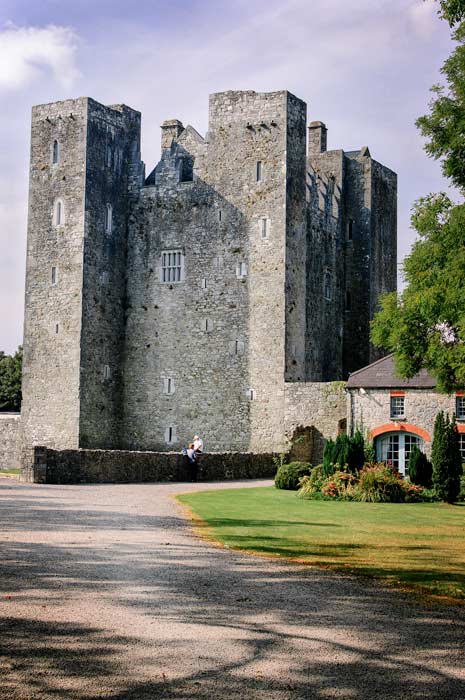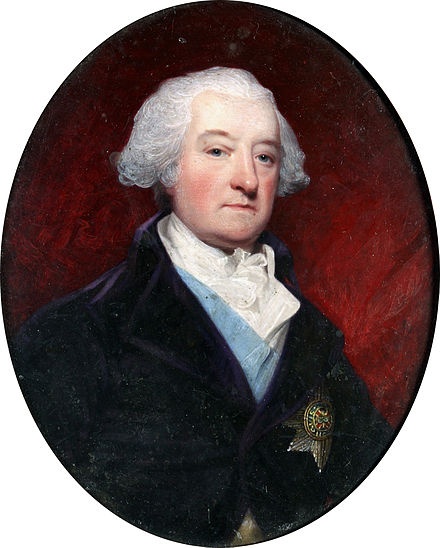This is a continuation in part of the Pauline Roche story. I love Pauline Roche, she’s the sort of relation everyone should have in their family history. Her story is so bizarre that it reads like a novel. So just to recap, she is John Roche’s great-granddaughter, and in an unintended way, one of the major beneficiaries of his will, at her marriage, she was said to have about £7,000. She is Ernest O’Bryen‘s first cousin on her mother’s side. Her mother Jane is John Roche O’Bryen‘s eldest sister. She is also his second cousin on her father’s side, because William Roche, Pauline’s father is their ( Jane and John Roche O’Bryen) first cousin once removed.
The following is extracted from BARRYMORE :RECORDS OF THE BARRYS OF COUNTY CORK FROM THE EARLIEST TO THE PRESENT TIME. WITH PEDIGREES. By the Rev. E. BARRY, M.R.I.A., V.P.R.S.A. Reprinted from the Journal of the Cork Historical and Archeological Society.CORK. PUBLISHED BY GUY AND CO. LTD, 70 PATRICK STREET. 1902.
William Barry, of Rockville, Carrigtwohill, gentleman, fifth son of Edmond fitzGarrett Barry, of Dundullerick and Rockville, gentleman, according to his son, John, was born 1757, and died the 24th of January, 1824, aged sixty-seven years.
He was married and had issue at the date of his father’s will, 30th March, 1783. His wife was Margaret, eldest daughter of James Barry, of Desert, in the barony of Barrymore, and county of Cork, gentleman, whose will is dated 21st November, 1793, but who died the 19th of November, 1793, aged sixty-five years, according to the inscription on his tomb at Ardnagehy.
Said James Barry and his brother, Robert Barry, of Glenville, are mentioned in the will of Thomas Barry, of Tignageragh, gentleman, dated 16th November, 1778, and were his first and second cousins, and were great-grandsons of Edmund Barry, of Tignegeragh, gentleman, whose will is dated 22nd April, 1675, and whose father was Richard Barry, of Kilshannig, gentleman, son of John fitzRedmond Barry, of Rathcormac, Esq., and whose wife was a daughter of Thomas Sarsfield, of Sarsfield’s Court, an alderman of Cork, and a prominent Confederate Catholic in 1641.
William Henry Barry is Pauline Roche’s husband, and William Barry, of Rockville is William Henry Barry’s grandfather. So Pauline was marrying into the Catholic Irish landed gentry; being an heiress with £ 7,000 probably helped. What is slightly curious is why there was no apparent attempt to marry her off to an O’Bryen cousin, but then given her treatment by her uncle, perhaps she had washed her hands of them. Perhaps it was love, perhaps it was status, perhaps both.
Back to the Rev. Barry: By his marriage with Margaret, eldest daughter of James Barry, of Desert, William Barry, of Rockville, had issue— 14 children (11 sons and 3 daughters)
- Edmund, who died in infancy.
- James Barry, of Dundullerick, (1782,-1846) having married in 1818 Elizabeth, daughter of Edward Barry, of Kilbolane, gentleman, and had issue: (1) William Barry, of Dundullerick, gentleman, who died unmarried 3rd February, 1875
(2) Edward Barry, barrister-at-law, secretary to Sir Edward Sullivan, Master of the Rolls, died unmarried 9th June, 1873;
(1) Anna Maria, married (1860) her cousin, Philip W. Creagh, solicitor, had issue— Captain James Wm. Joseph Creagh, born 18th Sept., 1863 : Philip William Creagh, veterinary surgeon, Fermoy, born 5th July, 1866; Eliza Mary Josephine, born 18th June, 1862, died 15 th August, 1866;
(2) Margaret, died unmarried 5th October, 1893.
3. David Barry, of Barry’s Lodge, gentleman, married Julia, daughter of Counsellor Geran, of Mitchelstown, and had issue—Richard Barry, of Barry’s Lodge, gentleman, famous as a gentleman rider, died unmarried, 1895; Mary, married to John Burns, of Aghern, gentleman ; Margaret, Julia.
4. Edmond Barry, M.D., died unmarried soon after having taken out his degree.
5. Richard Barry, of Greenville, gentleman, married Catherine, eldest daughter of John Galwey, of Rocklodge, Monkstown, county Cork, and Doon, county Clare, gentleman, third son of John Galwey, of Lota, county. Cork, and Westcourt, county Kilkenny, gentleman.
6. William Barry, lieut. R.N., son of William Barry, of Rockville, died unmarried.
7. Thomas Barry, of Rockville, gentleman, son of William Barry, of Rockville, married, about the 15th of November, 1829, Julia, daughter of Stephen Murphy, of the city of Cork, draper, and had issue—
(1) William Barry, of Rockville and Greenville, M.D., assist-surgeon H.M. 36th Regiment of Foot. He married a daughter of Count Rivilioli, and died the 17th day of June, 1887. All his children by his marriage with Miss Rivilioli died in childhood except Thomas and Beatrice, and perhaps Stephen;
(2) Thomas, heir to his uncle William, died unmarried;
(3) Stephen Barry, of Broom-field, county Cork, gentleman, a successful breeder of racehorses, who died unmarried on the 17th May, 1899;
(4) Ada, unmarried;
(5) Mary, unmarried.
8. Garrett Barry, of Greenville, gentleman, J.P., owner of the famous racehorses Arthur and Waitawhile, died unmarried.
9. Patrick Barry, of Cork, gentleman, died 1861, having married Mary Anne, daughter of Stephen Murphy, of the city of Cork, draper, and had with an elder son, Stephen Barry, of H. M. Customs, Cork, and a daughter, Kate, who both died unmarried,and
a younger son, William Henry Barry, of Ballyadam, gentleman, J.P., who was heir to his uncle, Henry Barry, of Ballyadam, and was for many years postmaster of Cork. He married in 1857 Pauline Roche, only child of William Roche, son of Lawrence Roche, whose brother, John Roche, amassed great wealth during the French wars, and built Aghada House. John Roche’s only daughter, married to [Henry Hewitt] O’Brien, of Whitepoint, Queenstown, J.P., left a daughter, who married her cousin, William Roche, and with her husband died shortly after the birth of their only daughter, Pauline, who was entrusted to the guardianship of her uncle, Dr. O’Brien, of Liverpool, and at marriage had a fortune of £7,000. The issue of the marriage of William Henry Barry and Pauline Roche are:
(1) Henry, born 1862;
(2) William Gerard;
(3) Pauline;
(4) Edith, married — Hayes, surgeon-major H. M. Army Medical Department, and has issue;
(5) Mary, married Cecil Smith Barry, second son of Captain Richard Smith Barry, of Ballyedmond, and first cousin of the Hon. Arthur Hugh Smith Barry, P.C. [now Lord Barrymore];
(6) Henrietta,
(7) Kate.
10. John Barry, Esq., M.D., medical officer of the Carrignavar dispensary district, and next of the Carrigtwohill dispensary district. He married Ellen, daughter of Mr. David Kearney, of Newcastle, county Tipperary, and died in December, 1879, leaving two sons and a daughter:
11. Henry Barry, of Ballyadam, gentleman, barony constable of Barrymore, coroner of the east riding of the county of Cork, Belgian Consul for the port of Cork, Knight of the Order of Leopold, etc., married a Miss Mary Lynch, and died on the 16th of December, 1868, without issue.
(1) Johanna, the eldest daughter of William Barry, of Rockville, was born on the 1st of July, 1784, and died unmarried 1873.
(2). Ellen, second daughter of William Barry, of Rockville, married James Fitzgerald, of Castlelyons, gentleman, and had issue an only son, William Edmond Fitzgerald, who died unmarried in Australia.
(3.) Mary, third daughter of William Barry, of Rockville, died unmarried.
So William Henry, and Pauline are part of a huge extended family. He has eleven uncles, and three aunts on his father’s side of the family alone, and she has five uncles, and an aunt on her mother’s side. I’m not even going to attempt to work out how many uncles and aunts they both have in total.
The next step is to look at Pauline and William’s children



